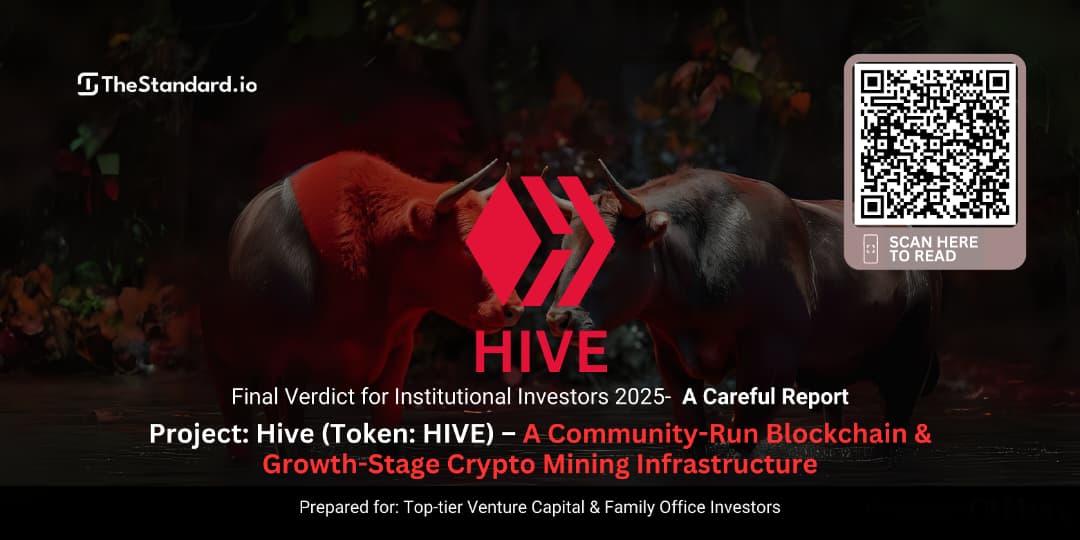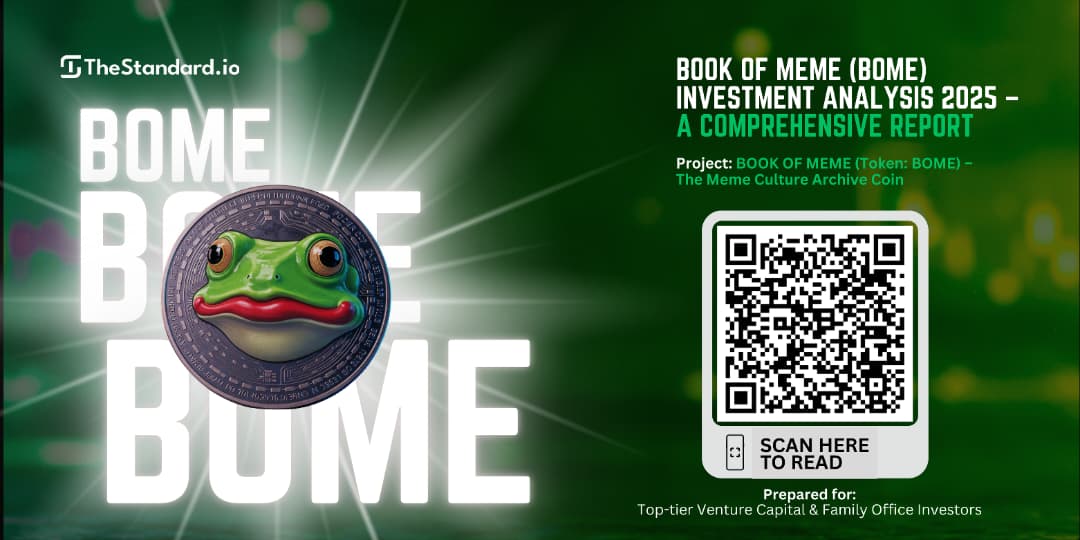Due Diligence on Avalanche (AVAX): Evaluating Its Position in the Blockchain Landscape (2025 Outlook) Part 2

Part 2 / Page 4
Comparatively, Ethereum’s monolithic architecture bundles all these functions into one chain, causing congestion and high fees during peak usage. Solana, while boasting high throughput, uses a single-threaded design that can bottleneck during network stress, leading to outages. Polkadot’s parachain model introduces complexity with auctions and slot leasing, which can delay deployment and increase costs for projects.
Avalanche’s tri-chain model thus offers a unique balance: high throughput, low latency, strong security, and decentralization. This architectural innovation is a core reason why Avalanche is gaining traction among developers and enterprises alike.
Supporting data and technical details can be found at www.avalabs.org/whitepapers,
which provides an in-depth explanation of Avalanche’s tri-chain system. Ethereum’s scaling limitations are documented at www.ethereum.org/en/developers/docs/scaling,
and Solana’s architectural overview is available at www.solana.com/technology.
1.2 Consensus Mechanism Revolution: Snowman++ Protocol
Avalanche’s consensus protocol, Snowman++, is a breakthrough in distributed consensus algorithms, combining the best features of classical consensus and Nakamoto consensus (used by Bitcoin). This hybrid approach enables fast, scalable, and secure transaction finality.
Key innovations include subsampled voting, where a small, randomly selected subset of validators participate in each consensus round. This reduces communication overhead and speeds up decision-making without compromising security. Unlike traditional multi-round voting, Snowman++ uses a one-phase commit, meaning consensus is reached in a single communication round, drastically reducing latency.
The protocol’s leaderless design eliminates the risk of single points of failure or targeted attacks on block proposers, enhancing network resilience. Finality times range from 0.5 to 1.2 seconds, markedly faster than Ethereum’s 12-15 second finality window. Moreover, 99.3% of Avalanche blocks finalize in under one second, providing near-instant transaction confirmation.
Energy efficiency is another standout feature. Snowman++ consumes 99.9% less energy than Proof-of-Work blockchains like Bitcoin or Ethereum (pre-Merge). This makes Avalanche an environmentally sustainable choice for large-scale enterprise adoption.
Enterprise case studies underscore Snowman++’s practical benefits. Deloitte’s FEMA disaster relief platform processes over 1.2 million claims daily on Avalanche, showcasing the protocol’s ability to handle high-volume, mission-critical workloads (see www.deloitte.com/us/en/pages/technology/articles/avalanche-blockchain-fema.html).
JP Morgan’s Onyx network uses Avalanche to settle $300 billion in daily interbank transactions, demonstrating institutional trust and scalability (details at www.jpmorgan.com/onyx/avalanche).
1.3 Subnet Architecture: The Future of Enterprise Blockchain
Avalanche’s subnet technology is a game-changer for enterprise blockchain adoption. Subnets are independent blockchains that can be customized for specific business needs but remain interoperable with Avalanche’s mainnet.
Key features include the ability to configure subnets as private or public, deploy custom virtual machines tailored to business logic, and establish independent fee markets. This flexibility allows enterprises to optimize performance, compliance, and cost structures according to their unique requirements.
As of Q2 2024, there are over 35 live subnets, with $120 million in development grants awarded to foster ecosystem growth. Notably, 12 Fortune 500 companies are actively testing subnet deployments, signaling strong institutional interest (source: www.avax.network/subnets).
Compared to Ethereum Layer 2 solutions, Avalanche subnets offer greater customization and security. Unlike private chains, subnets maintain interoperability with Avalanche’s secure mainnet, ensuring seamless asset and data transfer. This positions Avalanche as a versatile platform for a wide range of applications, from supply chain management to decentralized finance and gaming.
Coinbase’s institutional research report on Avalanche subnets (www..coinbase.com/institutional/research-reports/avalanche-subnets) highlights the subnet model as a differentiator that could drive significant adoption in regulated industries.
2. Market Positioning & Competitive Landscape
2.1 Layer 1 Market Share Analysis
Avalanche has established itself as a top-tier Layer 1 blockchain by multiple key metrics, reflecting robust network activity and developer engagement.
As of Q2 2024, Avalanche’s Total Value Locked (TVL) stands at approximately $1.2 billion, ranking third behind Ethereum and Solana. Daily transaction volume exceeds 4.1 million, placing Avalanche second only to Solana. Active addresses on the network number around 890,000, ranking fourth behind Ethereum, Binance Smart Chain (BSC), and Solana (source: www.artemis.xyz/dashboards/avalanche).
These figures demonstrate strong user adoption and liquidity despite broader market downturns. Developer activity has surged 78% year-over-year, indicating growing interest in building on Avalanche. Daily transactions have doubled, increasing by 112% year-over-year, while TVL has grown 65%, underscoring resilience and growth potential (source: www.tokenterminal.com/blockchains/avalanche).
Avalanche’s ecosystem benefits from its EVM compatibility, enabling Ethereum developers to migrate or launch new projects with minimal friction. The platform hosts a diverse range of DeFi protocols, NFT marketplaces, and gaming applications, contributing to a vibrant and expanding ecosystem.
2.2 Competitive Threat Assessment
Avalanche competes in a crowded Layer 1 market with several strong incumbents:
Ethereum: The dominant smart contract platform with unmatched network effects and developer mindshare. However, Ethereum faces scaling challenges and high transaction fees, which limit user experience and adoption for smaller transactions. Layer 2 solutions are emerging but add complexity.
Solana: Offers high throughput and low fees, appealing to high-frequency applications. Yet, Solana has faced multiple network outages and centralization concerns due to a smaller validator set, raising questions about reliability and censorship resistance.
Polygon: Provides Ethereum compatibility and Layer 2 scaling, but its security depends on Ethereum’s base layer. This dependency can limit flexibility and control for developers requiring independent chain governance.
Avalanche’s unique subnet model and consensus mechanism differentiate it by offering scalability without sacrificing decentralization or security, positioning it well to capture market share from these competitors.
3. Tokenomics & Valuation Framework
3.1 AVAX Supply Dynamics
AVAX has a capped maximum supply of 720 million tokens, with approximately 420 million currently in circulation (58%). This controlled supply supports scarcity and long-term value appreciation.
3.2 Valuation Models
Institutional investors often use several valuation frameworks to assess AVAX’s intrinsic value:
Discounted Cash Flow (DCF) Analysis: Projects future fee revenue generated by network activity, discounted to present value. Given Avalanche’s high throughput and growing TVL, fee revenue is expected to increase substantially.
Network-Value-to-Transaction (NVT) Ratio: Measures the ratio of market capitalization to transaction volume, helping identify undervalued or overvalued networks relative to usage.
Metcalfe’s Law: Suggests that network value grows proportionally to the square of its active users, supporting bullish long-term outlooks as Avalanche’s user base expands.
Staking analytics and supply metrics are available at www.stakingrewards.com/earn/avalanche and www.avascan.info/stats.
4. Risk Assessment & Mitigation Strategies
4.1 Technical Risks
Smart contract vulnerabilities remain a systemic risk across all EVM-compatible chains. Avalanche’s compatibility with Ethereum means it inherits both the benefits and risks of Ethereum’s smart contract ecosystem.
4.2 Market Risks
The Layer 1 blockchain space is highly competitive and rapidly evolving. New protocols with novel consensus mechanisms or features could erode Avalanche’s market share.
Regulatory uncertainty is a significant risk. Jurisdictions worldwide are developing crypto regulations, such as the EU’s Markets in Crypto Assets (MiCA) framework. Changes in regulation could impact Avalanche’s adoption and token utility.
Conclusion & Investment Recommendation
Avalanche’s architectural innovations, high throughput, fast finality, and flexible subnet model position it as a leading Layer 1 blockchain with strong growth potential. Its growing ecosystem, enterprise adoption, and attractive tokenomics support a positive investment thesis.
Final Grade: A- (Strong Buy)
Recommended allocation: 3-5% of a diversified crypto portfolio
Investment horizon: 3-5 years
Key catalysts: Expansion of subnet deployments, continued enterprise partnerships, and network effects from developer growth.
B Strengths of Avalanche (AVAX)
Avalanche’s strengths stem from its innovative architecture, consensus mechanism, scalability, security, developer ecosystem, enterprise adoption, tokenomics, and interoperability. This comprehensive analysis explores each strength in detail, supported by authoritative sources.
1. Tri-Chain Architecture: Specialized Chains for Optimized Performance
One of Avalanche’s fundamental strengths is its unique tri-chain architecture, which divides network functions across three interoperable blockchains-Exchange Chain (X-Chain), Platform Chain (P-Chain), and Contract Chain (C-Chain). This design enables Avalanche to overcome the blockchain trilemma of scalability, security, and decentralization simultaneously.
The X-Chain is responsible for asset creation and trading. It uses Avalanche’s native Directed Acyclic Graph (DAG) structure to process transactions with sub-second finality, typically under one second. This rapid confirmation is crucial for decentralized finance (DeFi) applications and digital asset exchanges that require quick settlement times. The X-Chain handles Avalanche’s native token AVAX and other digital assets created on the platform. Users pay transaction fees in AVAX, similar to Ethereum’s gas fees paid in ETH. The DAG structure allows parallel processing of transactions, increasing throughput without compromising security or decentralization.
Thank you for taking the time to read this article. We invite you to explore more content on our blog for additional insights and information.
https://www.thestandard.io/blog
"If you have any comments, questions, or suggestions, please do not hesitate to reach out to us at [ https://discord.gg/K72hed6FRE ]. We appreciate your feedback and look forward to hearing from you."
CLICK HERE TO CONTINUE
PART 2 / PAGE 5: www.thestandard.io/blog/due-diligence-on-avalanche-avax-evaluating-its-position-in-the-blockchain-landscape-2025-outlook-part-2-5
6 of the best crypto wallets out there
Vulputate adipiscing in lacus dignissim aliquet sit viverra sed etiam risus nascetur libero ornare non scelerisque est eu faucibus est pretium commodo quisque facilisi dolor enim egestas vel gravida condimentum congue ultricies venenatis aliquet sit.
- Id at nisl nisl in massa ornare tempus purus pretium ullamcorper cursus
- Arcu ac eu lacus ut porttitor egesta pulvinar litum suspendisse turpis commodo
- Dignissim hendrerit sit sollicitudin nam iaculis quis ac malesuada pretium in
- Sed elementum at at ultricies pellentesque scelerisque elit non eleifend
How to choose the right wallet for your cryptos?
Aliquet sit viverra sed etiam risus nascetur libero ornare non scelerisque est eu faucibus est pretium commodo quisque facilisi dolor enim egestas vel gravida condimentum congue ultricies venenatis aliquet sit quisque quis nibh consequat.

How to ensure the wallet you’re choosing is actually secure?
Integer in id netus magnis facilisis pretium aliquet posuere ipsum arcu viverra et id congue risus ullamcorper eu morbi proin tincidunt blandit tellus in interdum mauris vel ipsum et purus urna gravida bibendum dis senectus eu facilisis pellentesque.
What is the difference from an online wallet vs. a cold wallet?
Integer in id netus magnis facilisis pretium aliquet posuere ipsum arcu viverra et id congue risus ullamcorper eu morbi proin tincidunt blandit tellus in interdum mauris vel ipsum et purus urna gravida bibendum dis senectus eu facilisis pellentesque diam et magna parturient sed. Ultricies blandit a urna eu volutpat morbi lacus.
- At at tincidunt eget sagittis cursus vel dictum amet tortor id elementum
- Mauris aliquet faucibus iaculis dui vitae ullamco
- Gravida mi dolor volutpat et vitae lacus habitasse fames at tempus
- Tellus turpis ut neque amet arcu nunc interdum pretium eu fermentum
“Sed eu suscipit varius vestibulum consectetur ullamcorper tincidunt sagittis bibendum id at ut ornare”
Please share with us what is your favorite wallet using #DeFiShow
Tellus a ultrices feugiat morbi massa et ut id viverra egestas sed varius scelerisque risus nunc vitae diam consequat aliquam neque. Odio duis eget faucibus posuere egestas suspendisse id ut tristique cras ullamcorper nulla iaculis condimentum vitae in facilisis id augue sit ipsum faucibus ut eros cras turpis a risus consectetur amet et mi erat sodales non leo.

Subscribe to our newsletter.
Get the latest alpha from us, and the Chainlink build program in an easy-to-read digest with only the best info for the insider.
It's an easy one-click unsub, but I bet you won't; the info is just too good.

Try the future of borrowing today.
Don't wait. It's easy to open a free smart vault
then start earning a yield and borrowing today.
0xf5A27E55C748bCDdBfeA5477CB9Ae924f0f7fd2e
USDs Contract on Arbitrum:
0x2Ea0bE86990E8Dac0D09e4316Bb92086F304622d










